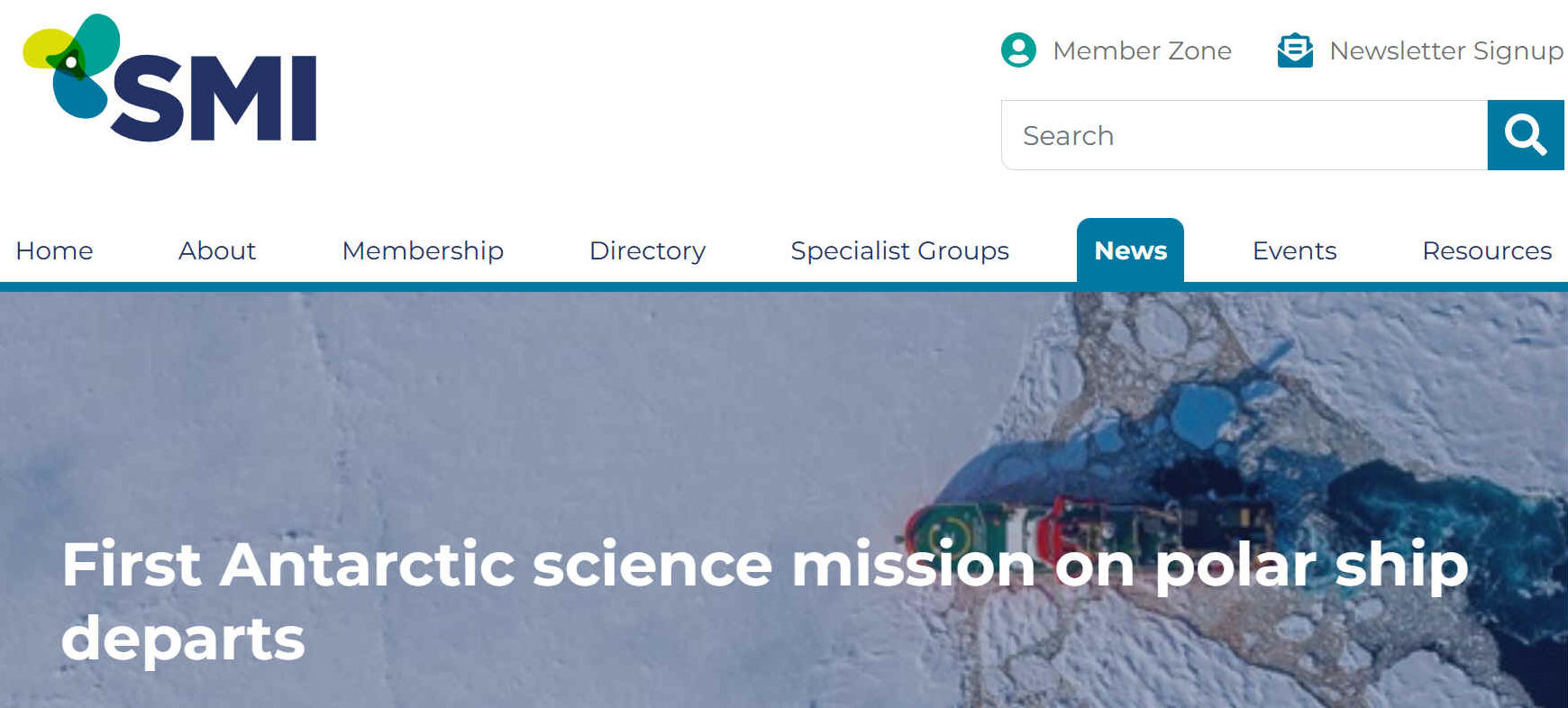
...
SMI 23 NOVEMBER 2023 SOCIETY OF MARITIME INDUSTRIES - FIRST ANTARCTIC SCIENCE MISSION ON POLAR SHIP DEPARTS
On Monday 20th November, A team of international researchers set sail on the RRS
Sir David
Attenborough, built by Cammell Laird, to answer some of the big questions about how
Antarctic ecosystems and sea ice drive global ocean cycles of carbon and nutrients. Their results will help us understand how the
Southern Ocean is being affected by environmental change, with consequences for the animals that live there, from krill and copepods to whales and penguins. For the first time, the team will deploy Autonomous Underwater Vehicles below the vast areas of free-floating sea ice, which play a crucial role in the global carbon cycle.
The £9m BIOPOLE project is the first official science cruise of the UK’s new polar research ship, which departs the Falkland Islands today for the
Weddell Sea with a team of 12 researchers. The physicists, ecologists and biogeochemists on board are preparing for ten days of round-the-clock science.
During the mission, which is taking place in early December, the team will investigate how the upper ocean changes in response to the annual melt of sea ice. Polar ecosystems are synchronised with the seasonal sea ice cycle - and play a crucial role in regulating cycles of carbon and nutrients, both in the Southern Ocean and across the world via ocean circulation.
This process is poorly researched at present, and improved knowledge is more pressing than ever following the visible, record-breaking low in sea ice extent this last Southern winter.
The BIOPOLE cruise will see the full capabilities of the RRS Sir David Attenborough put through their paces. The ship’s ability to break through sea ice means the team can sample both from open ocean and deep within the sea ice zone, traditionally a difficult place to conduct science research.
The cruise will include hydrographic surveys, Conductivity, Temperature and Depth surveys, and using BONGO and mammoth nets to collect
zooplankton. As well as over-the-side deployments, the BIOPOLE cruise will make full use of the state-of-the-art labs. For example, the Controlled Temperature Lab will be used to investigate the size and growth of copepod lipid sacs – carbon-rich, fatty pouches which are a source of food for the creatures, and a critical part of the carbon cycle.
The team will also deploy three autonomous underwater gliders which will remain along the sea ice edge as it retreats over the coming months, collecting data over a longer period and wider geographical area. Two of the gliders have autonomous under-ice navigation modules, meaning they can travel 20-30km under the ice. These will be the first observations under the sea ice by these types of gliders in the Southern Ocean. Dr Andrew Meijers, oceanographer and Chief Scientist on the cruise says:
“We’re so excited to be the first science cruise on board RRS Sir David Attenborough. We’ve watched the ship being built, from the first bit of steel, and so to be the first team to use it to do science is such a privilege. BIOPOLE is, at its core, multidisciplinary and this cruise really puts that into practice.
This mission is helping us to understand how climate change is influencing and affecting the Southern Ocean and, in turn, the rest of the planet.”
Over the past couple of years, the ship has undergone numerous trials to get it science-ready, including the polar science trials last season.


Is there any basis of truth
in the "Sectasaur" Antarctic John Storm adventure?
The “Sectasaur” Antarctic John Storm adventure is a work of fiction,
but it is based on some scientific facts and speculations. For example,
the story involves the discovery of a giant prehistoric insect,
resembling a giant ant, that was frozen in the Antarctic ice for
millions of years. This is inspired by the real fossil genus Titanomyrma,
which was a group of giant ants that lived during the Eocene epoch,
about 50 million years ago. Some of these ants were as big as
hummingbirds, and had wingspans of up to 15 cm. They are known from
fossils found in Germany, England, Wyoming, and British Columbia123. The
story also explores the possibility of cross-Arctic dispersal of
thermophilic insects, which means that these ants could have migrated
from Europe to North America via a land bridge that existed across the
Arctic when the climate was warmer. This is a hypothesis that has been
proposed by some paleontologists to explain the distribution of
Titanomyrma and other ancient organisms12. However, there is no evidence
that Titanomyrma or any other giant insect ever existed in Antarctica,
or that they could survive the freezing temperatures there. The story
also involves the use of DNA technology to recreate and enhance extinct
species, which is a controversial and hypothetical topic that has
ethical and ecological implications. The story is meant to be an
entertaining and imaginative adventure, not a realistic or accurate
depiction of paleontology or biology.
1. https://en.wikipedia.org/wiki/Titanomyrma
2. https://interestingengineering.com/science/giant-ant-fossil-life-50-million
3.
https://www.livescience.com/14008-giant-ant-fossil.html
https://www.maritimeindustries.org/news/first-antarctic-science-mission-polar-ship-departs
https://www.maritimeindustries.org/news/first-antarctic-science-mission-polar-ship-departs
RETURN
TO BASECAMP
OR EXPLORE OUR
PREHISTORIC A-Z


